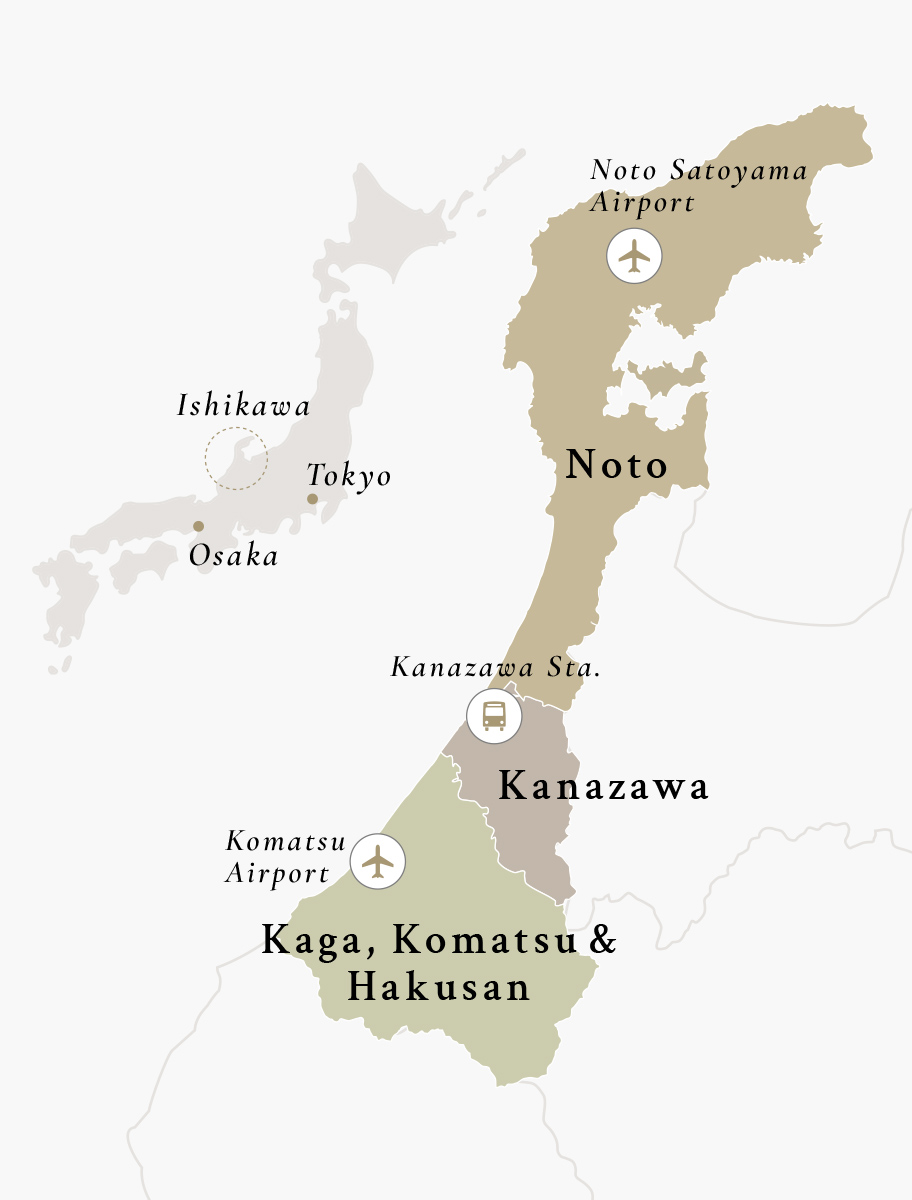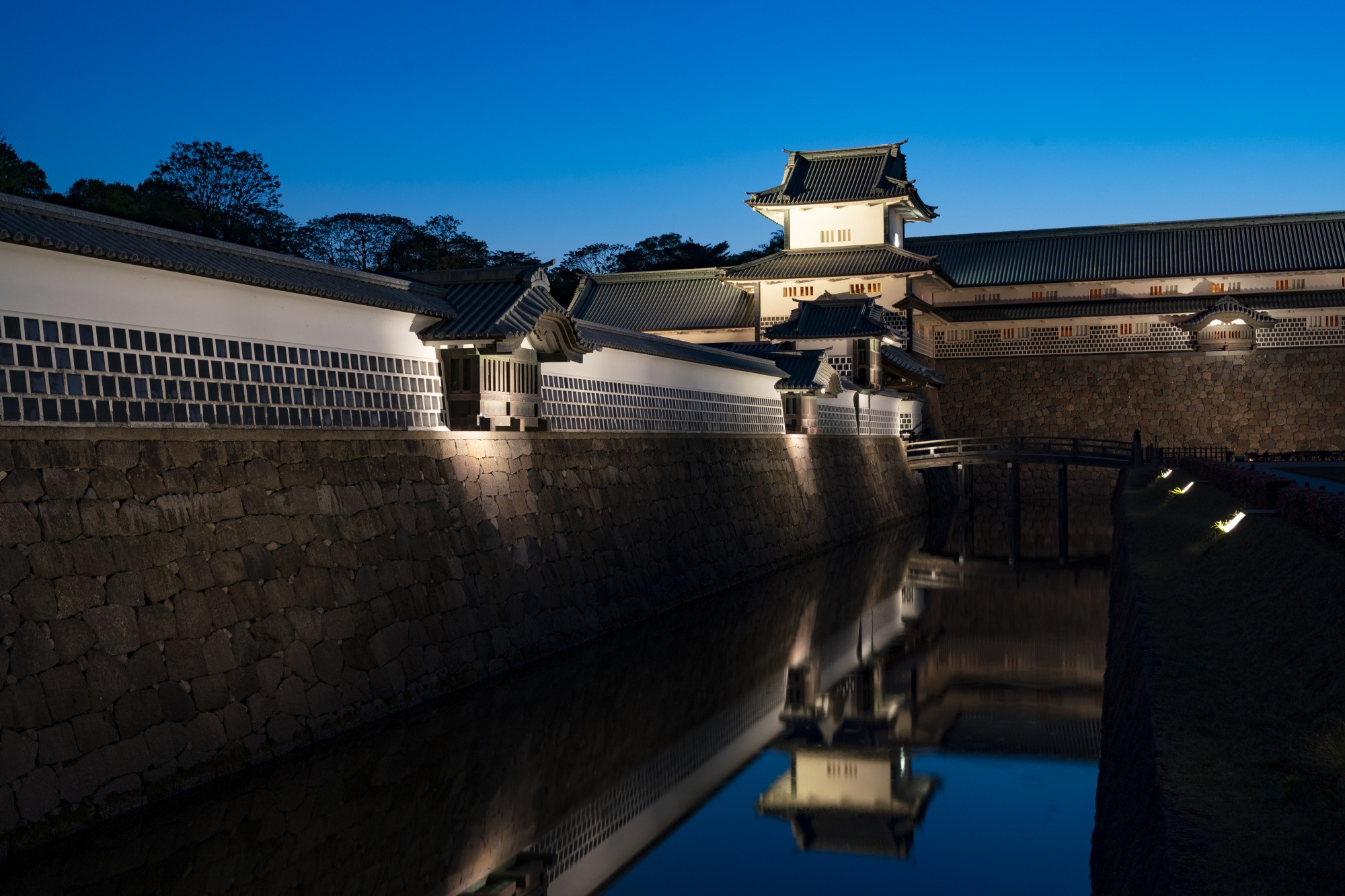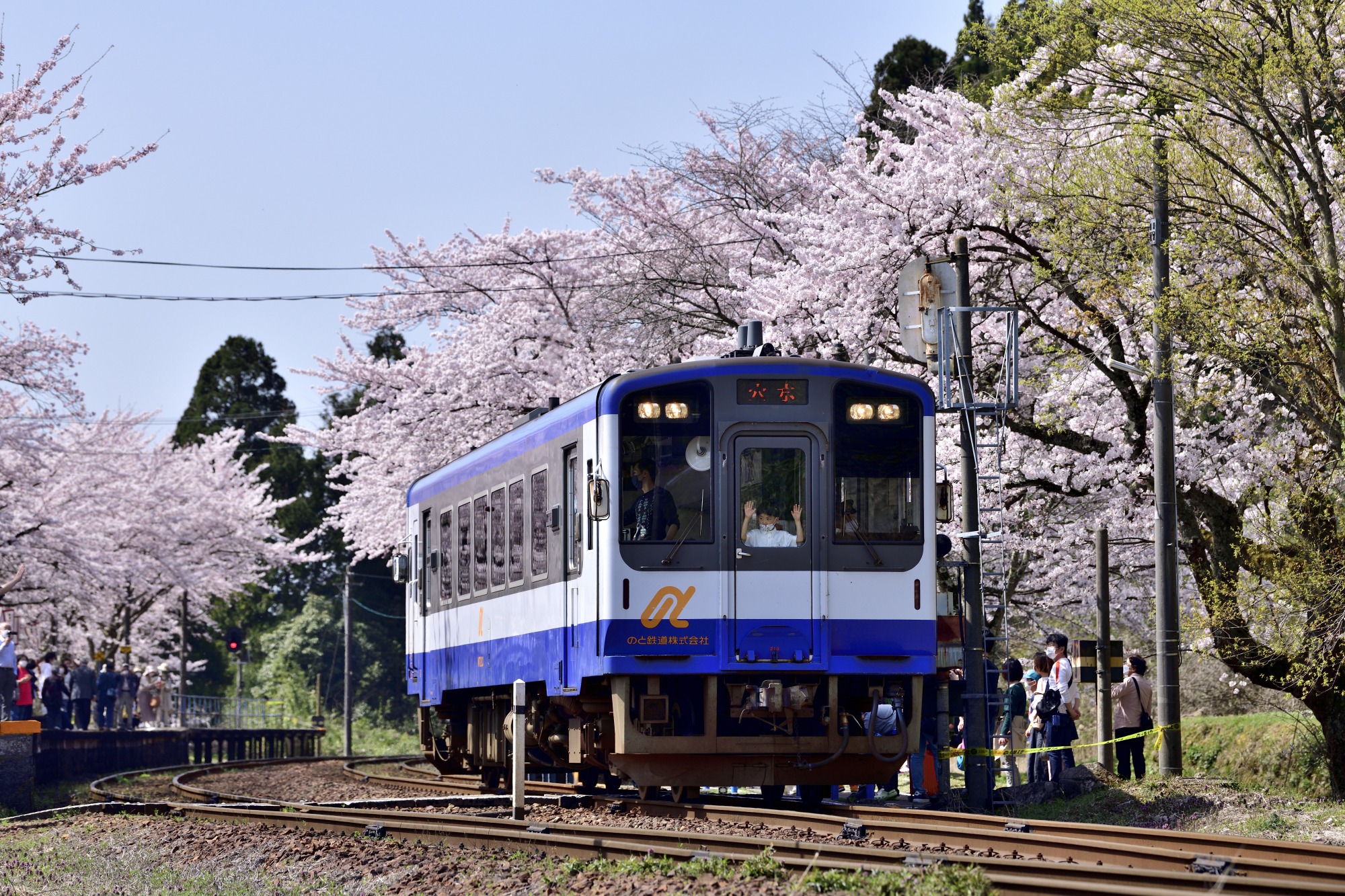About Ishikawa

Ishikawa Prefecture
Ishikawa is located along the Sea of Japan coast, roughly opposite Tokyo on Japan’s main island. The prefecture is often divided into two main regions, with the capital city of Kanazawa tying them together both culturally and geographically, as a historic hub of commerce, arts, and culture. North of Kanazawa is Noto, which stretches well into the sea with a peninsula full of rugged terrain, and traditional lifestyles lived in harmony with natural forests and coastlines. To the south is the Kaga region, which offers relaxation in hot spring resort towns, as well as outdoor fun like hiking and skiing in the foothills of Mt. Hakusan.

Noto
Noto Peninsula, extending to the Sea of Japan, is a region with truly breathtaking scenery, traditional crafts and agriculture. Unfortunately this beautiful region was damaged by an earthquake earlier this year, but is slowly recovering and will be able to welcome it’s guests in the future.
Kanazawa
Kanazawa is a capital of Ishikawa Prefecture, a city famous for its traditional culture, history and delicious food. If you want to dive in the world of samurais and geishas, gold leaf and sake, shrines an temples, this city is a must-see.
Kaga, Komatsu & Hakusan
This area is famous for its hot springs, traditional crafts, sake and foods. With a beautiful Mount Hakusan, one of the three sacred mountains of Japan, it is a great destination for both relaxation and active tourism, as well as sightseeing.
History

Back in the day of the samurai, known in Japan as the Edo period (1603–1868), the country was divided not into prefectures but into feudal domains. The Kaga Domain covered modern-day Ishikawa and a portion of modern-day Toyama, and was ruled from Kanazawa Castle by the Maeda family. This family was noteworthy for being second only to the Tokugawa shogunate — the national government itself — in incredible wealth.
For this very reason, the Maeda family chose to use their money and resources not for military or political power, but to instead encourage cultural and artistic pursuits here, in order to avoid unwanted scrutiny and suspicion from the shogun. As a result, Kanazawa and the entire Kaga Domain flourished as a center of artisanal crafts, cuisine, and performing arts, and the Maeda family were widely beloved by the people of the domain. The refined culture of the samurai class gradually spread even to the common people, leaving a widespread appreciation for the finer things in life that can still be seen and felt to this day.
Getting to Ishikawa

The most common way for visitors to come to Ishikawa is by train, generally arriving through Kanazawa Station. The Hokuriku Shinkansen offers direct trips from Tokyo to Kanazawa in roughly 2½ hours. Visitors coming from Osaka, Kyoto, and Nagoya can make the trip in roughly the same length of time by taking a JR Limited Express train to Tsuruga, then transferring to the Hokuriku Shinkansen line for the rest of the trip.
Highway buses are another option for getting to Ishikawa from various major cities, as well as from Kanazawa to popular destinations in the area. These can be a more convenient option for budget-conscious travelers or travelers who simply wish to avoid transfers along the way.
There are also two airports in Ishikawa, with one to the north and one to the south. Komatsu Airport is roughly 40 minutes from Kanazawa, in the southern part of the prefecture, with domestic flights to and from Tokyo, Sapporo, Sendai, Fukuoka, and Okinawa, as well as international flights connecting to Seoul, Shanghai, and Taipei. Visitors headed north to the Noto region may prefer to fly into Noto Satoyama Airport, which has daily flights to and from Tokyo.